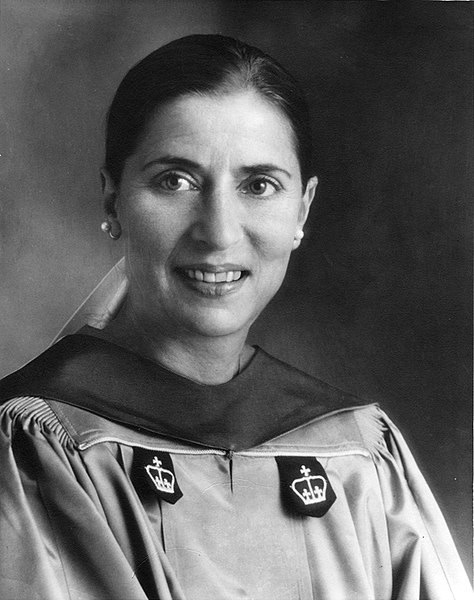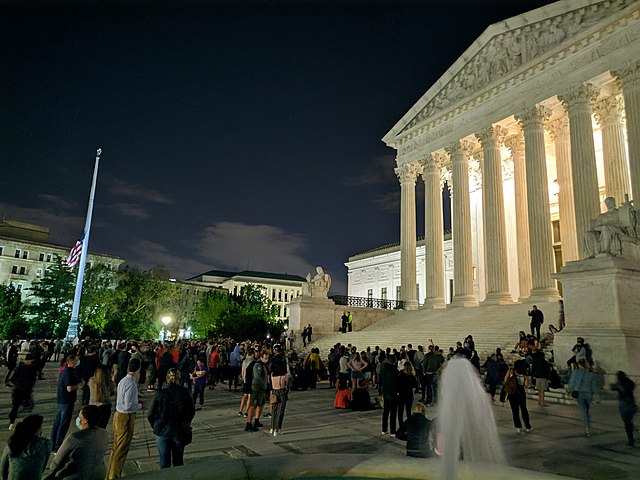Joan Ruth Bader Ginsburg was an American lawyer and jurist who served as an associate justice of the Supreme Court of the United States from 1993 until her death in 2020. She was nominated by President Bill Clinton to replace retiring justice Byron White, and at the time was viewed as a moderate consensus-builder. Ginsburg was the first Jewish woman and the second woman to serve on the Court, after Sandra Day O'Connor. During her tenure, Ginsburg authored the majority opinions in cases such as United States v. Virginia (1996), Olmstead v. L.C. (1999), Friends of the Earth, Inc. v. Laidlaw Environmental Services, Inc. (2000), and City of Sherrill v. Oneida Indian Nation of New York (2005). Later in her tenure, Ginsburg received attention for passionate dissents that reflected liberal views of the law. She was popularly dubbed "the Notorious R.B.G.", a moniker she later embraced.
Official portrait, 2016
Ginsburg in 1959, wearing her Columbia Law School academic regalia
Ginsburg in 1977, photographed by Lynn Gilbert
Ginsburg with President Jimmy Carter in 1980
Death and state funeral of Ruth Bader Ginsburg
Ruth Bader Ginsburg, Associate Justice of the Supreme Court of the United States, died from complications of metastatic pancreatic cancer on September 18, 2020, at the age of 87. Her death received immediate and significant public attention; a vigil at the Supreme Court plaza in Washington, D.C., was held that same evening. Memorials and vigils were held in several U.S. cities, including Chicago, New York City, and San Francisco.
Mourners gather at the Supreme Court after the announcement of Ruth Bader Ginsburg's death
Courtroom with Ginsburg's seat draped in black, the day after her death
A candlelit makeshift memorial to Ginsburg on the day she died
The courtroom doors of the Supreme Court, Ginsburg's seat, and the bench before her seat each draped in black the day after her death








